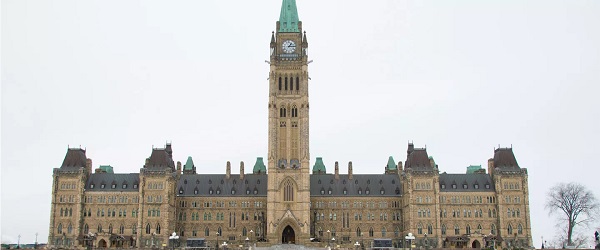Alberta
Watch: Ten new cases of COVID-19 in Alberta. Two people in intensive care

From the Province of Alberta
COVID-19 in Alberta March 14
Ten additional cases of COVID-19 have been confirmed, bringing the total number of cases in the province to 39.
Six of the new cases are in Calgary Zone and four are in Edmonton Zone.
Two of the new cases, one in Edmonton Zone and the other in Calgary Zone, have been admitted into intensive care. All other new cases are self-isolating at home and expected to make a full recovery.
Eight of the new cases have been confirmed to be related to international travel or to a previously confirmed case. Investigations are ongoing on the remaining two cases.
“Given the rise of the COVID-19 pandemic, we know parents, students, and school officials are very concerned. I want to assure all Albertans that their children’s safety is top of mind in all our decisions, and we are making the best public health decisions we can with the information we have, in this rapidly developing situation. We are prepared to make changes if and when the situation warrants it.”
School update
A conference call was held today with the chief medical officer of health and more than 500 representatives from Alberta’s school boards, school authorities, and education stakeholders.
On March 13, Alberta recommended that schools remain open at this time. The World Health Organization does not recommend school closures as the only way to prevent the spread of COVID-19 in children.
Alberta continues to monitor the province’s situation carefully. If the situation warrants it, the Alberta government could direct the closure of an individual school, a group of schools, an entire school division, or all schools in the province. This would be a decision of Cabinet’s emergency management committee.
In meantime, all schools should take steps to protect the health of students and staff:
- eliminate large gatherings of students
- ensure no more than 250 people are in the same room at any given time
- consider cancelling extracurricular activities that involve physical contact
A new guide has been developed to help schools and daycares reduce the risk of spreading COVID-19. The guide is available at alberta.ca/COVID19.
We will continue to update this document based on feedback received from education stakeholders.
Flight Information
There are more and more flights with passengers confirmed to have the virus. Albertans should self-monitor their air travel, so that public health officials can use their time to trace other contacts. Those who have recently returned to Alberta via a flight, are encouraged to visit alberta.ca/COVID19 for flight information and to self-isolate if found to be at risk of exposure.
Government will be posting flight information that includes the flight number, date and any seats on the flight that might be at risk of exposure to COVID-19. Passengers in affected seats are encouraged to self-isolate for 14 days after arrival in Canada and monitor for symptoms. Other passengers are not required to self-isolate but should monitor for symptoms as a precaution.
Certain professions may be exempt from travel restrictions. Any exemptions are being determined on a case-by-case basis after consultation with industry stakeholders. At this time, flight attendants and pilots are exempted from travel recommendations, provided they practice good hygiene and take precautions to limit their risk.
Updated resources
- Flight information is posted under the “Info for Albertans” section.
- The new guide for schools and child care programs has been posted under “Info for schools and child care centres.”
- A new information sheet on mass gatherings, including risk mitigation strategies, has been posted under “Public health restrictions on mass gatherings.”
- Information posters are available under “Resources” for organizations and businesses to distribute.
- Alberta Health Services has launched an online self-assessment tool to help Albertans determine whether they should get tested for COVID-19. Over 100,000 Albertans completed self-assessments within the first 24 hours.
Quick facts
- Alberta’s Provincial Operations Centre in Edmonton elevated from a level 2 to a level 3 – out of a possible 4. Level 3 indicates an increased amount of cross-government coordination through the Alberta Emergency Management Agency.
- The most important measures that Albertans can take to prevent respiratory illnesses, including COVID-19, is to practise good hygiene.
- This includes cleaning your hands regularly for at least 20 seconds, avoiding touching your face, coughing or sneezing into your elbow or sleeve, disposing of tissues appropriately, and staying home and away from others if you are sick.
- Anyone who has health concerns or is experiencing symptoms of COVID-19 should contact Health Link 811 to see if follow up testing is required.
- For recommendations on protecting yourself and your community, visit alberta.ca/COVID19.
Alberta
CPP another example of Albertans’ outsized contribution to Canada

From the Fraser Institute
By Tegan Hill
Amid the economic uncertainty fuelled by Trump’s trade war, its perhaps more important than ever to understand Alberta’s crucial role in the federation and its outsized contribution to programs such as the Canada Pension Plan (CPP).
From 1981 to 2022, Albertan’s net contribution to the CPP—meaning the amount Albertans paid into the program over and above what retirees in Alberta received in CPP payments—was $53.6 billion. In 2022 (the latest year of available data), Albertans’ net contribution to the CPP was $3.0 billion.
During that same period (1981 to 2022), British Columbia was the only other province where residents paid more into the CPP than retirees received in benefits—and Alberta’s contribution was six times greater than B.C.’s contribution. Put differently, residents in seven out of the nine provinces that participate in the CPP (Quebec has its own plan) receive more back in benefits than they contribute to the program.
Albertans pay an outsized contribution to federal and national programs, including the CPP because of the province’s relatively high rates of employment, higher average incomes and younger population (i.e. more workers pay into the CPP and less retirees take from it).
Put simply, Albertan workers have been helping fund the retirement of Canadians from coast to coast for decades, and without Alberta, the CPP would look much different.
How different?
If Alberta withdrew from the CPP and established its own standalone provincial pension plan, Alberta workers would receive the same retirement benefits but at a lower cost (i.e. lower CPP contribution rate deducted from our paycheques) than other Canadians, while the contribution rate—essentially the CPP tax rate—to fund the program would likely need to increase for the rest of the country to maintain the same benefits.
And given current demographic projections, immigration patterns and Alberta’s long history of leading the provinces in economic growth, Albertan workers will likely continue to pay more into the CPP than Albertan retirees get back from it.
Therefore, considering Alberta’s crucial role in national programs, the next federal government—whoever that may be—should undo and prevent policies that negatively impact the province and Albertans ability to contribute to Canada. Think of Bill C-69 (which imposes complex, uncertain and onerous review requirements on major energy projects), Bill C-48 (which bans large oil tankers off B.C.’s northern coast and limits access to Asian markets), an arbitrary cap on oil and gas emissions, numerous other “net-zero” targets, and so on.
Canada faces serious economic challenges, including a trade war with the United States. In times like this, it’s important to remember Alberta’s crucial role in the federation and the outsized contributions of Alberta workers to the wellbeing of Canadians across the country.
Alberta
Made in Alberta! Province makes it easier to support local products with Buy Local program

Show your Alberta side. Buy Local. |
When the going gets tough, Albertans stick together. That’s why Alberta’s government is launching a new campaign to benefit hard-working Albertans.
Global uncertainty is threatening the livelihoods of hard-working Alberta farmers, ranchers, processors and their families. The ‘Buy Local’ campaign, recently launched by Alberta’s government, encourages consumers to eat, drink and buy local to show our unified support for the province’s agriculture and food industry.
The government’s ‘Buy Local’ campaign encourages consumers to buy products from Alberta’s hard-working farmers, ranchers and food processors that produce safe, nutritious food for Albertans, Canadians and the world.
“It’s time to let these hard-working Albertans know we have their back. Now, more than ever, we need to shop local and buy made-in-Alberta products. The next time you are grocery shopping or go out for dinner or a drink with your friends or family, support local to demonstrate your Alberta pride. We are pleased tariffs don’t impact the ag industry right now and will keep advocating for our ag industry.”
Alberta’s government supports consumer choice. We are providing tools to help folks easily identify Alberta- and Canadian-made foods and products. Choosing local products keeps Albertans’ hard-earned dollars in our province. Whether it is farm-fresh vegetables, potatoes, honey, craft beer, frozen food or our world-renowned beef, Alberta has an abundance of fresh foods produced right on our doorstep.
Quick facts
- This summer, Albertans can support local at more than 150 farmers’ markets across the province and meet the folks who make, bake and grow our food.
- In March 2023, the Alberta government launched the ‘Made in Alberta’ voluntary food and beverage labelling program to support local agriculture and food sectors.
- Through direct connections with processors, the program has created the momentum to continue expanding consumer awareness about the ‘Made in Alberta’ label to help shoppers quickly identify foods and beverages produced in our province.
- Made in Alberta product catalogue website
Related information
-

 2025 Federal Election14 hours ago
2025 Federal Election14 hours agoBREAKING: THE FEDERAL BRIEF THAT SHOULD SINK CARNEY
-

 2025 Federal Election15 hours ago
2025 Federal Election15 hours agoCHINESE ELECTION THREAT WARNING: Conservative Candidate Joe Tay Paused Public Campaign
-

 2025 Federal Election1 day ago
2025 Federal Election1 day agoOttawa Confirms China interfering with 2025 federal election: Beijing Seeks to Block Joe Tay’s Election
-

 2025 Federal Election1 day ago
2025 Federal Election1 day agoReal Homes vs. Modular Shoeboxes: The Housing Battle Between Poilievre and Carney
-

 2025 Federal Election2 days ago
2025 Federal Election2 days agoCarney’s budget means more debt than Trudeau’s
-

 International2 days ago
International2 days agoPope Francis has died aged 88
-

 Business2 days ago
Business2 days agoCanada Urgently Needs A Watchdog For Government Waste
-

 2025 Federal Election1 day ago
2025 Federal Election1 day agoHow Canada’s Mainstream Media Lost the Public Trust

